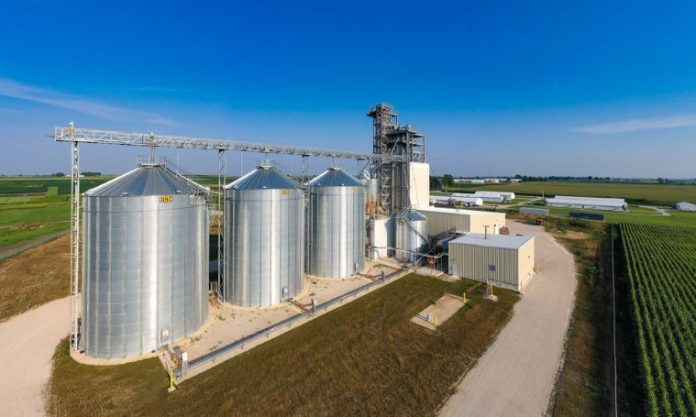Pets and livestock don’t ask for too much in life; they just need a warm, safe, and sheltered place to live. And, of course, food, water, and exercise. Meeting animal nutritional requirements is important, to say the least, as it gives them the vigor to grow, develop, and reproduce. Optimal nutrition is essential to maintain a quality life, so it’s necessary to ensure adequate intakes of amino acids, carbohydrates, fatty acids, minerals, and vitamins through supplementation. Each animal feed, pet food, or nutritional supplement bowl should be balanced correctly. Animals are susceptible to what they consume and how they consume, so they should get every essential nutrient in the right quantity at the right time.
A surge in pet and livestock ownership had led to a solid and growing market, with manufacturing the ready beneficiary of the trend. Even if they started out small, the newer players in the market have helped drive better quality across the global animal nutrition market. If you’re starting a new business, take the first steps towards a more automated process. in what follows, we’ll take a closer look at the essential manufacturing equipment supporting the industry today.
Slicing/Grinding/Cutting/Dicing Systems
These technologies were initially developed to process human foods, yet they were adapted to the particular needs of the animal nutrition industry. A slicer machine is deployed to obtain thin and uniform slices from various foods, ensuring greater employee safety. Certain animal nutrition products must be refined to achieve the desired texture; this is where the grinder comes into play. Its spinning blades reduce the size of the raw materials. A cutting machine, typically made from stainless steel, doesn’t require human resources, and the cutting size can be adjusted to meet food safety standards. If you need to produce hundreds of cubes per minute, you need a dicing system.
Raw Material Dosing Equipment
According to the experts at Alfraequipment, some processes require better accuracy in how much mineral or dry powder is being dispersed into packages. Raw material dosing equipment offers much-needed precision as far as material feeding is concerned. Pressing demands from authorities, intense competition, not to mention customer awareness create a situation where plants must achieve the highest possible outcomes, so using dosing equipment can improve quality. It’s possible to optimize production processes with minimal contamination, so manufacturers can stay ahead of the competition.
Mixing Machines
A mixing machine is used to combine different ingredients into a homogenous product (or mass). Animal nutrition products are specifically formulated to ensure balanced levels of protein, fat, carbohydrates, fiber, minerals, vitamins, etc., and one critical step in food processing is the preparation of powders, ground solids, and other dry ingredients, which are mixed together. Even with the right amount of ingredients and flavors, a good recipe won’t transform into good food unless the components are well-mixed. Relatively small amounts of liquid may be added to the mix to coat or absorb coloring; the machine is fine-tuned to avoid the formation of wet clumps of powder.
Can Seamers
Sealed cans are made out of tin, glass, paper, aluminum, and so on. A can seamer may have several heads to increase the speed of the process; each one is regarded as a machine on its own. The sealer works by distorting the shape of the edges of the plate around the ends of the can to squeeze them together, creating a tight seal. It can be used in any plant. Sustainable packaging is the growing focus of today’s consumers, so cans are spanning across specialty brands and channels, as well as traditional brands. Recycled cans turn into new cans; aluminum, in particular, can be recycled indefinitely.
Finished Product Handling Equipment
End-of-line outboarding equipment is suitable for handling bulk materials, powders, granulates, and liquids. When it comes to finished product handling, the steps can be performed manually or fully automatically. Automating the process requires technical know-how, so look for systems that are designed to function with minimal or no intervention, such as truck filling machines, silo discharge units, and kibble and end-of-line mixing systems. Finished product handling equipment enables plants to process high volumes of loose or crated products, as it’s designed to avoid fine loss, breaks, and residue.
Internal Transfer Equipment
Animal food processing equipment also encompasses transfer systems that minimize the risk of cross-contamination of batches, which can induce adverse health effects in pets and livestock. In manufacturing, there are several opportunities for introducing microorganisms from other sources; some of them can be members of feed microbial populations. Given the stringent imperatives, transfer solutions must be used to avoid cross-contamination. For example, automatic container-based transfer systems allow for the safe relocation of ingredients and finished products. A carrying device is configured to automatically transfer the container to a preset destination when the items inside meet the transfer condition.
Storage Systems
The ideal location for animal nutrition products is a clean, dry, frost-free area. Using a silo presents several advantages, such as better control, lesser ground space, and convenient loading and depositing. An all-stainless steel silo offers better protection from corrosion, so there’s no sanitation risk for your products, and it withstands environmental forces (e.g., frequent rainfall). It’s suitable for commonly used powders, granulates, and pellets. If you work with very difficult flowing materials, you need a flexible silo whose porous fabric allows the material to breathe. It goes without saying that such a storage solution has a higher production capacity and results in limited cross-contamination.
Final Considerations
The growing technological advancements in the animal nutrition industry will create opportunities for the market. Manufacturing goes beyond mixing and milling raw materials, meaning it’s necessary to make the most efficient use of safe and economically viable resources available to produce food that meets animals’ physiological requirements. Technological processes are helping exponentially. The right equipment, combined with strong application knowledge in animal nutrition, makes it possible to offer original products, coming to the help of nutritionists, feed mill managers, vets, and so forth. Needless to say, the value of the products depends on your integrity and safety when producing, handling, storing, and transporting them.































